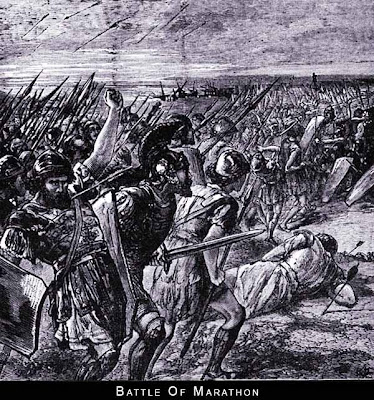The First Persian invasion on Greece begins in 490 BC. The war between citizen of Athens and Persian force starts at the place called “Marathon, Greece”. At first Persian force captured few places in marathon with the help of 600 ships and 100,000 soldiers. Later 10,000 Athenians and Plataeans were attack the Persians with tremendous force. In this battle there were 6,400 Persians killed and 6 war ships were destroyed by Greece but only 192 Greece were killed in this battle.
The Greece runner “Pheidippides” who runs 26 miles and 385 yards from the battle field into Athens and Says “Nike Nike” (Victory, Victory) then he dropped dead at that place. The long distance race was named “Marathon “after this battle.









